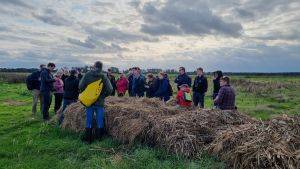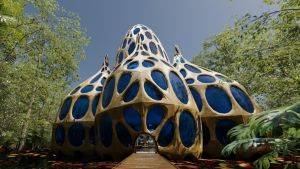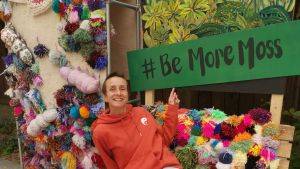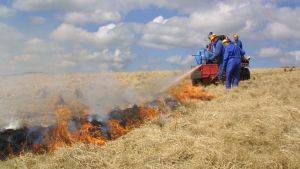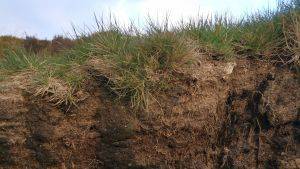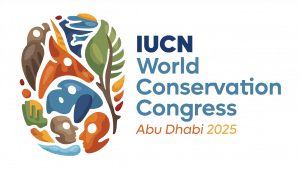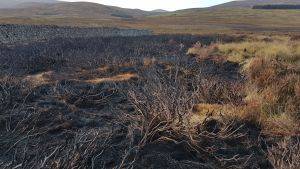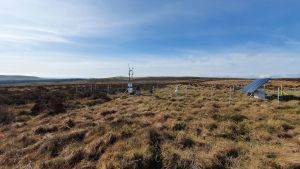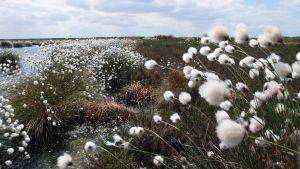Good practice in Peatland Ditch Block Construction
Description
Easily accessible, Blawhorn Moss provides a good demonstration site for bog restoration and different types of ditch blocking. The main threat to the hydrology of the mire came from the continued erosion of the larger gullies and the lowering of the water table through the extensive ditch network.
Project Aims
The most recent damming has involved the construction of large steel piling dams in the largest ditch where it was considered that plastic piling dams would not have the structural strength. Since 1990 we have had a water level monitoring system in place, so now have a long run of data which will soon be analysed.
Restoration Delivered
The first trials for ditch blocking started in 1984, when two surface drains were in-filled with peat sods. The drains retained some water upslope but there was still considerable leakage. A major programme of ditch blocking took place between 1987 and 1989. All of the small section drainage channels were blocked at 12-20 metre intervals and stepwise up the gradient along their length. Over 1000 small dams were installed. Six timber pile dams using elm plies were installed in an over-deepened ditch. Following on from this trial, 61 timber dams were installed the next year on all the main erosion gullies. This was followed by over 100 plastic piling dams and more recently peat dams to infill to achieve a higher water table. Today, most of the small drainage channels are filled with water with Sphagnum covering the sheet dams in the wettest parts. The timber dams have proven effective at preventing ongoing gully erosion but are often are leaky so cannot raise the water table fully. In 2001, over 400 heather bales were placed into ditches and are now slowing down water movement and providing a framework for Sphagnum moss to grow. In 2003, 30 large (3.6 metre wide) plastic pile dams were built along a central ditch. These dams successfully hold water and raise water levels in the adjacent ground, encouraging the growth of Sphagnum moss. One of the inadvertent biodiversity gains has been the return of Red Grouse to the site. At the time of the initial damming the heather had become rank, but the combination of burning and raising the water tables, the grouse have returned to Blawhorn.
Site Activity
The main thrust of management at Blawhorn Moss has been to block the extensive network of drains and reduce the impact of the gullies on the site, particularly the increased run-off and fragmentation of the bog edge. Over the years, different techniques for ditch blocking have been tried. These have included peat, plastic piling, steel sheets, heather bales, timber piles and steel piles. Since 2004 the local community have been closely involved in the site, advising/designing interpretation, access and the local Primary School has been involved in art projects, making a film, and celebrating the rededication of the NNR.
Project Name: Good practice in Peatland Ditch Block Construction
Organisation / Lead partner: Scottish Natural Heritage
Approximate area covered: 108 ha
Predominately: Lowland

